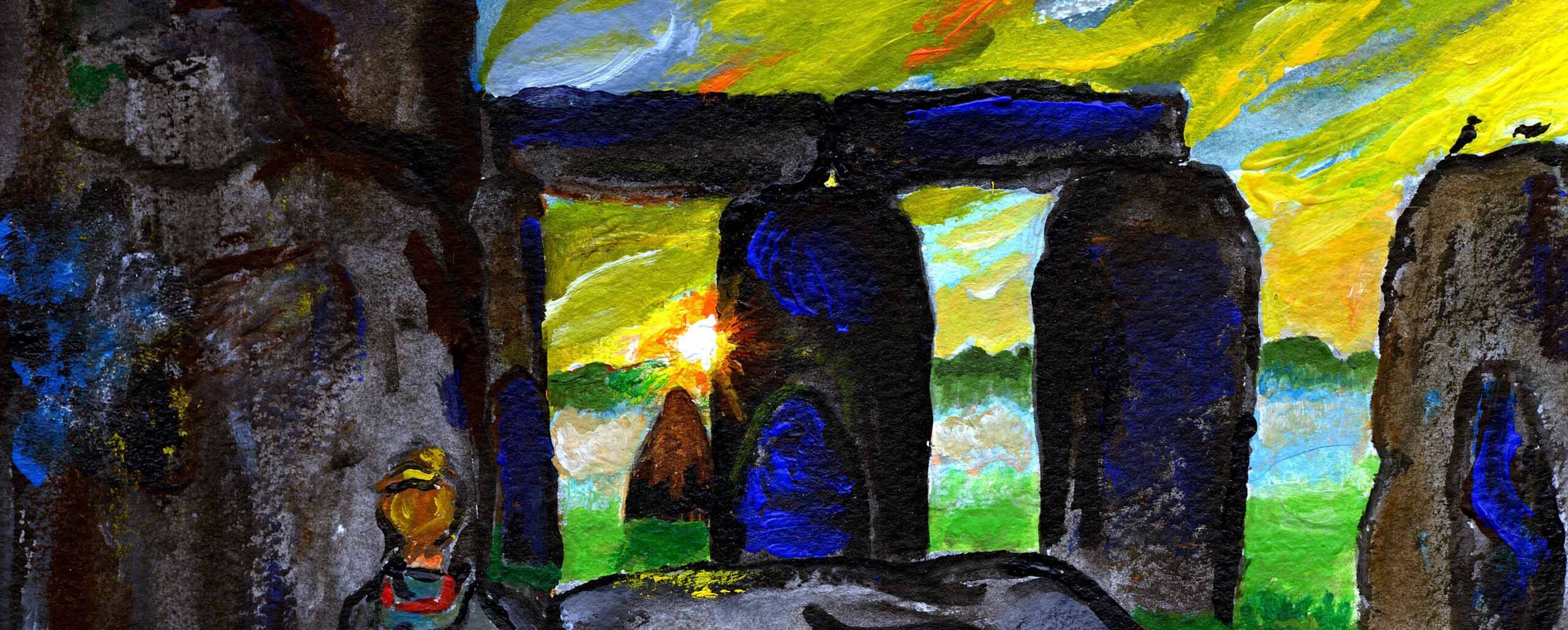Why is the prime meridian of Earth at Greenwich? Well, while I was living there I told you the history of how Christopher Wren chose the site and king Charles II set the observatory a-building in 1675 and John Flamsteed came to live in it as the first Astronomer Royal.
However, in the January issue of Scientific American its humorous columnist Steve Mirsky (“Anti Gravity, the Ongoing Search for Fundamental Farces”) tells of his conversation with Christopher Skaife about the ravens to whom, as Yeoman Warden of the Tower of London, Skaife has to attend.

According to Skaife, Flamsteed used to observe from the Tower, and complained to the king that wild ravens got between him and the stars. The king agreed to have them driven away, but someone mentioned that ravens had always lived in the Tower and if they were there no more “the kingdom would fall.” So Charles decreed that at least six ravens should reside there, and approved the observatory seven miles downriver at Greenwich.
Don’t forget that the story is filtered through the joker from the yeoman, whose book The Ravenmaster (2018) may contain the evidence.

The constellation of Corvus the Crow is close to Spica and is quite conspicuous, yet is surprisingly little known. Ravens are three times more massive than crows.
Oh, as some immediately knew, “Look on the morrow’s dawn, ye sluggards, and have hope” was a pale echo of Shelley: “My name is Ozymandias. King of Kings. Look on my works, ye mighty, and despair.” And the observatory doorman who went on to discover 37 comets was Jean-Louis Pons.

A much better post than Trump bashing. Let the lower minds chase those canards to their vaporous conclusions.
I remember one cold autumn morning while I was still working as a Parks Supervisor opening up the gates to Poe Park on the Grand Concourse in the Bronx. Crows were hangin out in the trees and I couldn’t help but think of Ed’s poem, The Raven and thinking Nevermore! That’s also the park my dog Eddie was found tied to a park bench just before I retired. Twelve years and still going strong. Hoping to get him to the next eclipse in 2024. Only time will tell.
The best word for “raven” that I know is the Navajo: gáagii. The accent means that it has a descending tone on the first long vowel. From one of my notes on life in the reservation:
“Croak” is the wrong word for the froglike chuckle or bubble of gáagii, the black raven. He throws himself upward into the wind and glides away backward. Crossing the land against the wind’s plan, he works this way and that among the cells of air that he can feel. His congregated shadows drift past your feet as you walk near the dump or where corpses are. Passing among hens, this shadow sends them running to the hogan door.
Speaking of poetry, I heard a good one today.
“Two men look out through prison bars. One saw mud, and the other stars.”
more poetry for y’all,,, Roses are red, violets are blue, some poems rhyme, this one doesn’t
NB: Shelley, not Keats.
Crows and ravens are common here in San Francisco. I’m partial to the ravens, they have more personality. Out at the beach they will spend hours climbing and diving in the onshore wind, outdoing one another, obviously for no other reason than sheer joy. They’ll also make a big deal out of some inedible bit of trash until the seagulls get interested in it. The ravens will make a show of defending the trash, which attracts more gulls. Then they’ll fly off a short distance and laugh at the gulls’ consternation.
By the way, Ozymandias was written by Percy Bysshe Shelley, not Keats.
Of course, and I’ve now amended that. I’m getting tired, it was three hours ago when I read the article and decided to do a quick blog post, but nothing is quick and email and other entanglements go on and on and on.